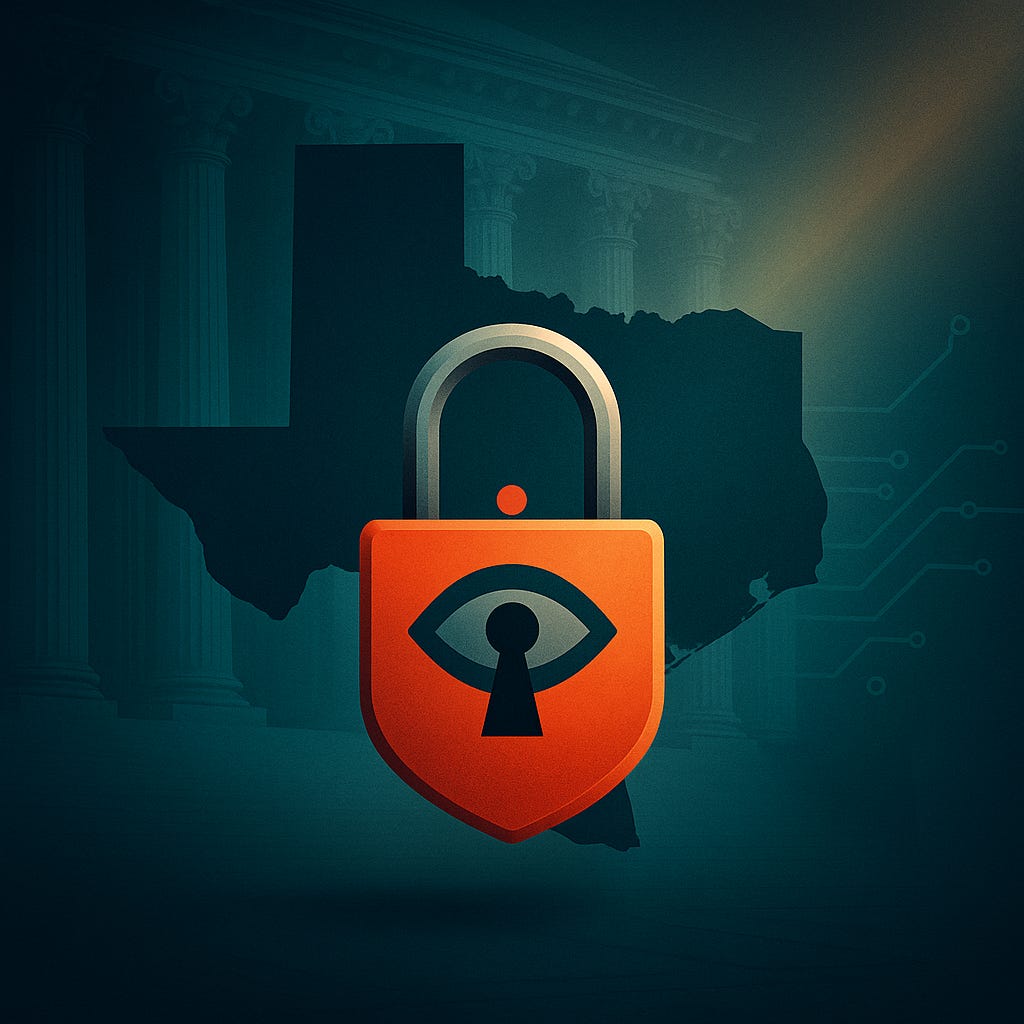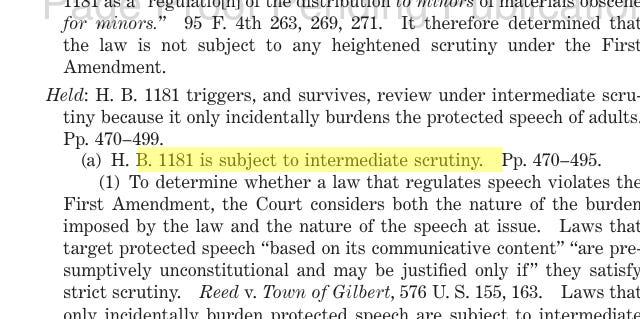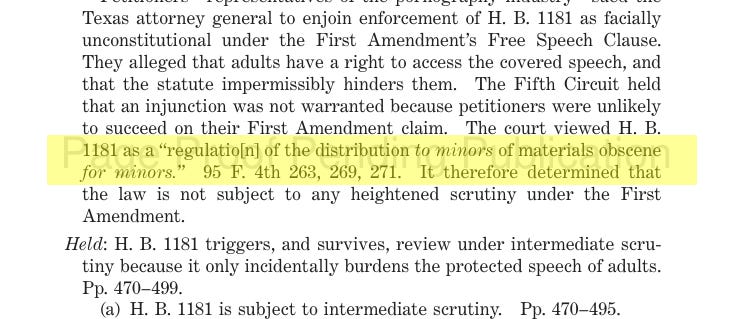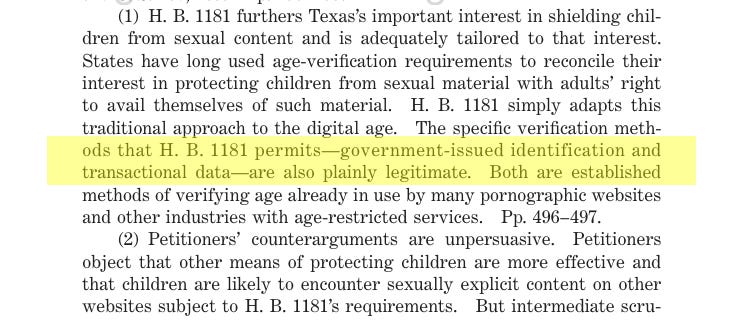Supreme Court Upholds Texas Porn Age-Verification Law
The Court said Texas’s age-verification rule targets minors, so the incidental burden on adults gets intermediate — not strict — scrutiny.
In no uncertain terms, this opinion drew a clean line for States on the issue of age verification laws designed to block minors access to pornography online.
It said that States can require porn sites to verify age to shield minors, and that kind of gatekeeping isn’t censorship of adults — it’s an incidental burden, reviewed under intermediate — not strict — scrutiny.
Quick primer — levels of scrutiny
Strict scrutiny — content-based rules about speech. Government needs a compelling interest and narrow tailoring; these laws almost always fail. (Reed v. Town of Gilbert (2015))
Intermediate scrutiny — content-neutral rules and incidental burdens on speech. Government needs an important interest and a reasonable fit — not the least-restrictive means — with ample alternative channels. (Ward v. Rock Against Racism (1989) and United States v. O’Brien (1968))
“Obscene to minors” carve-out — material can be legal for adults yet restricted for kids. Age-gating is a lawful way to enforce that, so adult ID checks are typically judged under intermediate — not strict — scrutiny. (Ginsberg v. New York (1968))
In Free Speech Coalition, Inc. v. Paxton (606 U.S. 461 (2025)), the Court — opinion by Justice Thomas — upheld Texas H.B. 1181’s requirement that porn sites verify users are 18+. Petitioners wanted strict scrutiny, claiming any friction on an adult’s access to legal content is a First Amendment injury. The majority (Thomas, J.) said the law targeted minors’ access, not adult viewing, and adults could still enter after an ID check. That made the burden incidental to the state’s aim and put the statute under intermediate scrutiny.
What happened — and how the Court framed it
Texas didn’t ban adult porn consumption. It told the largest distributors of explicit material they have to prove their visitors are adults before they serve them. That implemented a long-recognized power — keeping minors from material “obscene to minors.” Adults don’t have a First Amendment right to bypass an ID gate at a venue the state legitimately restricts to adults.
Why Texas won under intermediate scrutiny
The Court focused on fit, not perfection. Texas allowed verification via government identification or transactional data, and it let sites run checks themselves or use a third-party. The Court treated these as familiar tools used throughout age-restricted markets — and, as the opinion noted, parts of the porn industry have used them for years. That real-world track record undercut claims of inevitable chilling effects or operational impossibility.
The under-inclusiveness and “use filters instead” arguments
Petitioners pointed at search and social platforms to argue Texas under-targeted the problem and should try “less restrictive alternatives” (filters, default blocks, parental tools). But those were strict-scrutiny arguments. Under intermediate scrutiny, the state doesn’t have to pick the least restrictive alternative and isn’t doomed by under-inclusiveness. Texas can focus on the highest-volume distributors of explicit content and still satisfy the First Amendment.
What this was not
Petitioners leaned on the big internet-speech cases — Reno, Ashcroft, Playboy — where laws knocked out adults alongside minors. Overt suppression of protected adult speech triggers strict scrutiny and usually dies. Here, adults kept full access after a brief ID check. The Court’s point was that if you treat a door check like a ban, you endanger even the longstanding in-person age checks we accept everywhere from liquor counters to strip-club doors.
Privacy and stigma
The Court was unsympathetic to the idea that stigma around porn converts verification into a constitutional harm. Verification occurs with the site or its vendor — both have strong incentives to protect data. And a sector’s social baggage isn’t a pass on otherwise valid compliance rules. Essentially, we’ve run ID checks in sensitive contexts for decades. Doing it online — with options built into the statute — is not a radical First Amendment leap.
The Split
Justice Thomas wrote for the Court. The Chief Justice and Justices Alito, Gorsuch, Kavanaugh, and Barrett joined. Justice Kagan dissented, joined by Sotomayor and Jackson. The dissent reframed the burden on adults as direct, not incidental, which would trigger strict scrutiny (and likely flip the result). The majority rejected that reframing in favor of the analysis in classic O’Brien/Ward territory, which translates to regulating conduct to keep kids out, tolerating incidental burdens on adult speech if the fit is reasonable.
As it now stands, age-verification laws aimed at preventing minors from accessing material obscene to minors impose an incidental burden on adult speech. They’re judged under intermediate scrutiny, and they’ll stand if they materially advance child protection without burdening substantially more speech than necessary.






